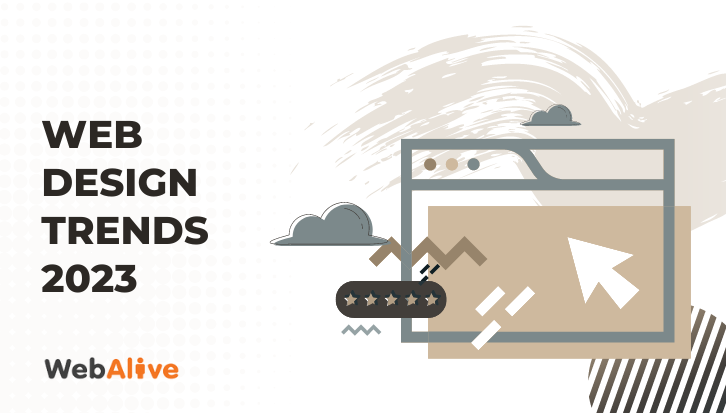The Bernard Rodriguez Journal
Exploring the latest trends and stories in news and lifestyle.
Web Design Trends That Will Make You Rethink Everything
Discover the web design trends that will revolutionize your approach and ignite your creativity! Don't miss out on the future of design!
The Future of Web Design: Key Trends to Transform Your Approach
The future of web design is poised to evolve rapidly, shaped by emerging technologies and shifting user expectations. As we move forward, key trends will redefine how designers approach their craft. One of the most significant trends is the rise of responsive design, which ensures that websites provide an optimal viewing experience across a myriad of devices. This approach prioritizes usability, accommodating different screen sizes and orientations, ultimately leading to increased user engagement and satisfaction.
Another transformative trend is the incorporation of artificial intelligence in web design. AI-driven tools can analyze user data to personalize experiences, predict user behavior, and automate routine design tasks. Additionally, the emphasis on minimalism continues to grow, with designs that focus on simplicity and clarity, allowing users to navigate effortlessly. As these trends shape the future, embracing them will be essential for any web designer looking to stay ahead in this ever-changing landscape.

Are You Missing These Essential Web Design Trends for 2024?
As we approach 2024, keeping up with the latest web design trends is crucial for maintaining a competitive edge. Minimalism continues to thrive, with designers opting for clean layouts that enhance user experience and streamline navigation. Additionally, incorporating dark mode options has become increasingly popular, providing users with a visually appealing alternative that is easier on the eyes. Other trends to watch out for include neumorphism, which offers a soft, tactile aesthetic, and the integration of micro-interactions that engage users and guide them seamlessly through your site.
Moreover, the rise of responsive AI tools is transforming how websites are designed and maintained. These tools personalize user experiences based on behavior and preferences, making your design not just appealing but also intelligent. It's also important to focus on accessibility, ensuring your website is usable by everyone, including those with disabilities. In 2024, prioritizing sustainability in design, such as optimizing for lower energy usage and incorporating eco-friendly elements, will not only benefit the environment but also resonate with users who value corporate responsibility.
How Minimalism and Bold Colors are Redefining Web Aesthetics
The intersection of minimalism and bold colors is increasingly shaping modern web aesthetics. As internet users grow accustomed to complex designs and overwhelming visuals, many brands are embracing a minimalistic approach that emphasizes simplicity and clarity. This design philosophy advocates for less clutter and a streamlined user experience, allowing essential content to shine. By utilizing spacious layouts and subtle typography alongside striking color palettes, websites can create engaging environments that draw users in without causing distraction.
Bold colors play a pivotal role in this minimalist trend, acting as eye-catching focal points amidst understated backgrounds. These vibrant hues not only guide users' attention but also evoke emotional responses that enhance brand identity. Incorporating bold color schemes into minimalist designs fosters a sense of modernity and sophistication, appealing to the contemporary audience. As a result, web designers are now tasked with striking a balance between simplicity and visual impact, redefining the boundaries of digital aesthetics in ways that resonate on a deeper level with viewers.